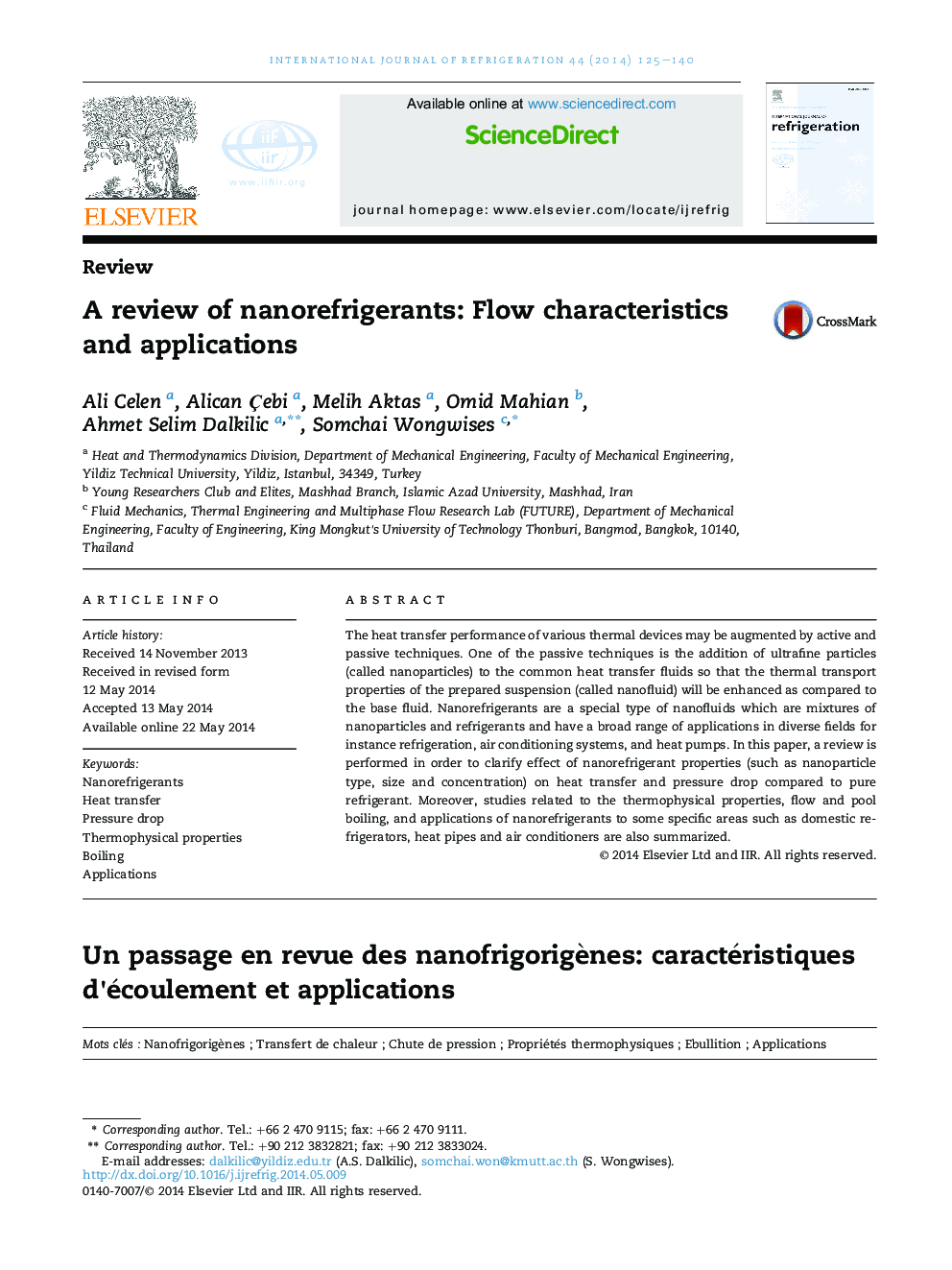| Article ID | Journal | Published Year | Pages | File Type |
|---|---|---|---|---|
| 789362 | International Journal of Refrigeration | 2014 | 16 Pages |
•Increasing of the freezing speed and COP in cooling devices.•Decreasing of the energy consumption.•Common usage possibility in many domestic and industrial devices in the near future.•Problems of agglomeration, suspension, dispersion, sedimentation regarding long-term usage.•Lack of generalized analytical models for the prediction of physical properties.
The heat transfer performance of various thermal devices may be augmented by active and passive techniques. One of the passive techniques is the addition of ultrafine particles (called nanoparticles) to the common heat transfer fluids so that the thermal transport properties of the prepared suspension (called nanofluid) will be enhanced as compared to the base fluid. Nanorefrigerants are a special type of nanofluids which are mixtures of nanoparticles and refrigerants and have a broad range of applications in diverse fields for instance refrigeration, air conditioning systems, and heat pumps. In this paper, a review is performed in order to clarify effect of nanorefrigerant properties (such as nanoparticle type, size and concentration) on heat transfer and pressure drop compared to pure refrigerant. Moreover, studies related to the thermophysical properties, flow and pool boiling, and applications of nanorefrigerants to some specific areas such as domestic refrigerators, heat pipes and air conditioners are also summarized.
